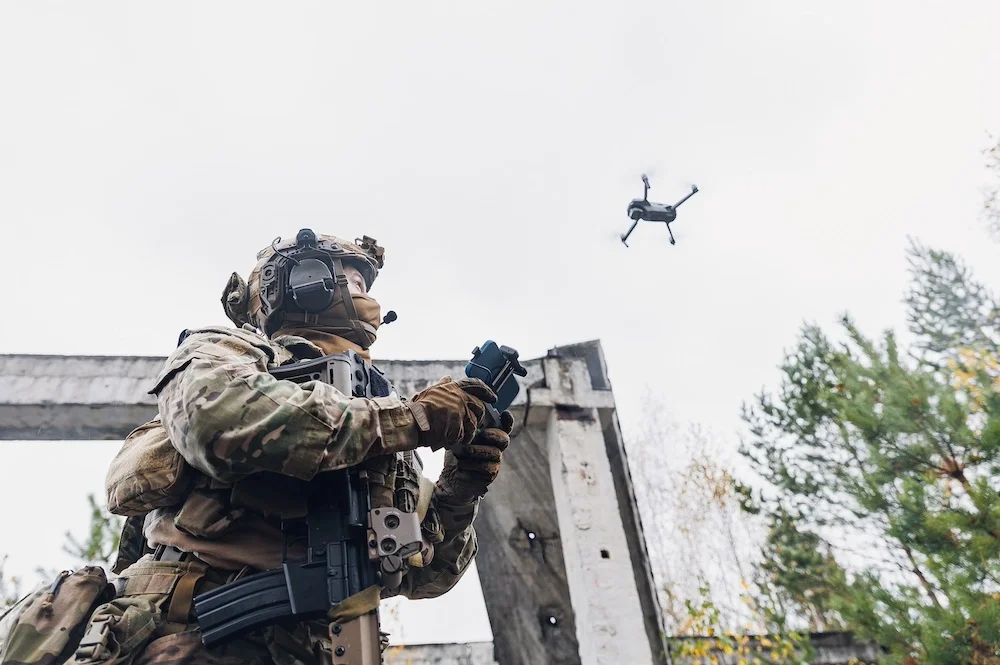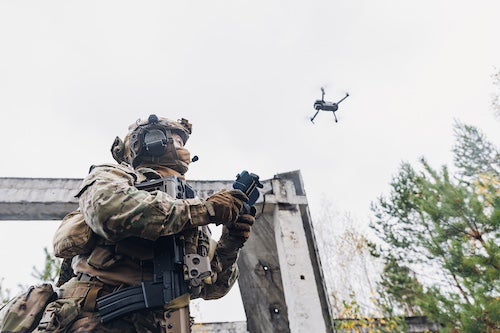

University of Illinois Urbana-Champaign political science professor Nicholas Grossman is the author of “Drones and Terrorism: Asymmetric Warfare and the Threat to Global Security” and specializes in international relations. Grossman spoke with News Bureau business and law editor Phil Ciciora about the Russia-Ukraine conflict.
At the two-year mark of the Russian invasion of Ukraine, where do we stand? How long can Ukraine maintain a stalemate? How long can Russia?
“Stalemate” isn’t quite the right word, at least to the extent that it implies statis. The main lines moved little in 2023, but the front has been active, with casualties in the hundreds of thousands, plus thousands of vehicles and weapons systems destroyed. Russia has gone over the front to bomb Ukrainian cities, while Ukraine has gone over and around to sink Russian naval vessels. Attrition is a significant factor, but it’s hard to spot breaking points in advance.
But interpreting the question as how long Russia or Ukraine can avoid collapse and prevent a decisive breakthrough by the other side, I don’t know. Attrition and war weariness take a toll, and someone will eventually break, but both sides proved formidable at stopping the other’s offensives last year. If Ukraine’s current equipment shortages become increasingly acute, Russia could make gains, but they’ll likely be slow, costly and relatively small. In 2022, Ukraine thwarted Russia’s effort to take Kyiv largely on their own, before Western aid started really flowing.
If U.S. funding for Ukraine dries up, does that embolden Russian president Vladimir Putin to press on in his war efforts, despite the steep losses in blood and treasure that he’s already incurred?
Due to Republican opposition in Congress, U.S. aid to Ukraine has mostly dried up. That’s a main factor in Ukraine’s incredibly dire equipment shortages. Among the notable effects are decreases in the rate of artillery fire, with Russia shooting at a ratio of 5:1 or more. Ukrainian forces have had to abandon some positions due to insufficient ammunition. European countries can make up some of the shortfall, but without American help, Ukraine is in trouble.
This Ukrainian weakness – any evident Ukrainian weakness – emboldens Russian president Vladimir Putin to push harder. Many outside observers have trouble wrapping their heads around this, since they personally see the death and destruction of war as inherently bad, something anyone would want to stop. But that’s not how Putin sees it. He’s after conquest, not national security. Kremlin propaganda might say that poor, beleaguered Russia was so threatened by NATO that it had no choice but to attack a country that isn’t in NATO. But Russia’s actions – not to mention two years of public statements by government officials and state media – indicate Russia aims to subjugate Ukraine, and eventually build on that to threaten more of Europe.
When Putin sees Ukraine’s military struggling and America’s will wobbling, he doesn’t think “Oh, thank God, Russia is safe from attack, we can finally stop all this killing.” He thinks “See, I knew they were weak, push more and they’ll break.”
That’s harder for Russia’s adversaries to counter, and psychologically uncomfortable for many observers to accept. A powerful tyrant trying to brutally subjugate a neighbor sounds like history, a thing some thought relegated to the 20th century. But that’s what we’re dealing with.
There have been hints that Putin may be looking for an off-ramp in Ukraine. Do you foresee that happening, especially with the U.S. becoming increasingly entangled in a brewing Middle East conflict?

When the Putin governments hints that Russia may be looking for an off-ramp in Ukraine, you should read it as “We’re ready to accept your surrender now.” The “off-ramp” envisioned by Russia includes, at minimum, Ukraine acknowledging that territory Russia took that Ukraine hasn’t been able to take back is part of Russia, and promising to give Moscow a say in Ukraine’s foreign relations – namely that Ukraine can’t partner with the West, especially NATO, unless the Kremlin gives the OK, which they won’t.
To Putin, American focus shifting to the Middle East with the Israel-Hamas war in Gaza is another opportunity to press, another reason to think the U.S. will back off, not a reason to quit just as Russia is gaining an advantage.
And looming over all that is the 2024 U.S. election. The likely presidential nominees have staked out opposite positions on the war, with the Democrat, President Joe Biden, vowing to support Ukraine as long as it takes to get Russia to withdraw, and the Republican, former President Donald Trump, planning to cut off Ukraine and push them to give Russia what it wants.
With a real chance of a more sympathetic American president taking office in 2025, Putin almost certainly won’t seek an off-ramp this year.
Has the Russian invasion of Ukraine emboldened or deterred other authoritarian leaders in China and Venezuela who may be planning quick land grabs of neighboring countries?
Whether Russia’s invasion of Ukraine emboldens or deters other authoritarians from attempting conquest depends on the outcome. The war has been costly for Russia, with hundreds of thousands of military casualties, an economy straining under sanctions and domestic crackdowns on dissent.
If the U.S. abandons Ukraine and Ukrainian resistance collapses, the war will go down in history as a partial Russian victory, and other aggressors might see it as a model. China, for example, could conclude that attacking Taiwan would be met with American and other international complaints that would die down within a couple of years.
However, if American aid to Ukraine resumes, and Ukraine keeps thwarting Russia’s attacks until Russia decides to stop, the invasion will go down in history as a failure, and a warning to other aggressors against underestimating the democratic world’s resolve.
What effect has the success of Ukraine’s drone program had on modern warfare tactics?
Ukraine’s drone program is one of the biggest factors keeping Russia at bay.
In particular, small drones are cheap, plentiful and useful for both surveillance and attack. Their cameras make surprise attacks nearly impossible, and, when loaded with explosives, they provide a method to attack vehicles and soldiers while hiding a safe distance away. That’s true of both sides and helps explain why 2023 offenses failed to break through.
But Ukraine appears to have used more small drones, and to greater advantage, with first-person view drones making up for some of Ukraine’s ammunition shortage. By some estimates, Ukraine lost over 10,000 drones in a month. But they keep producing and acquiring more.


